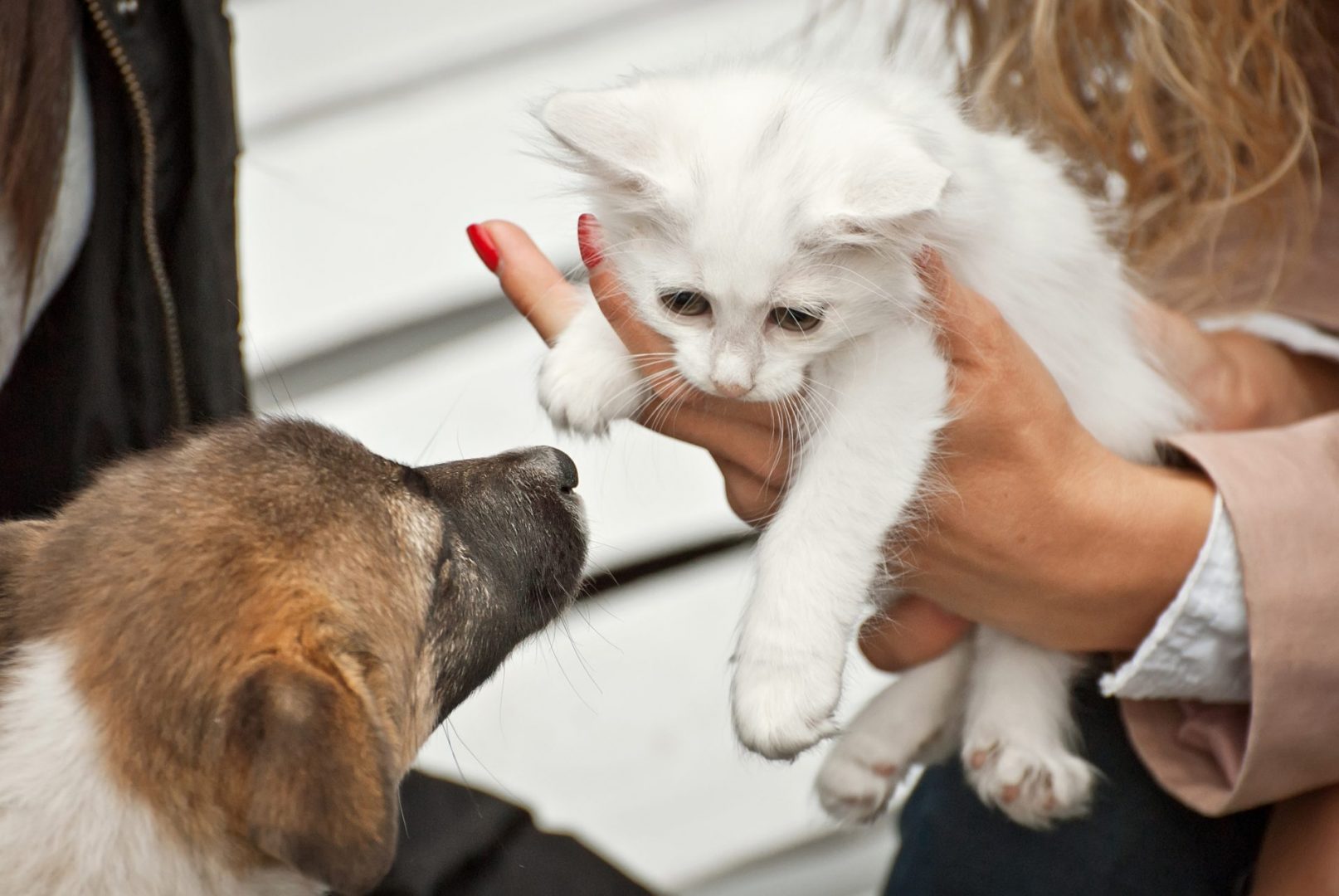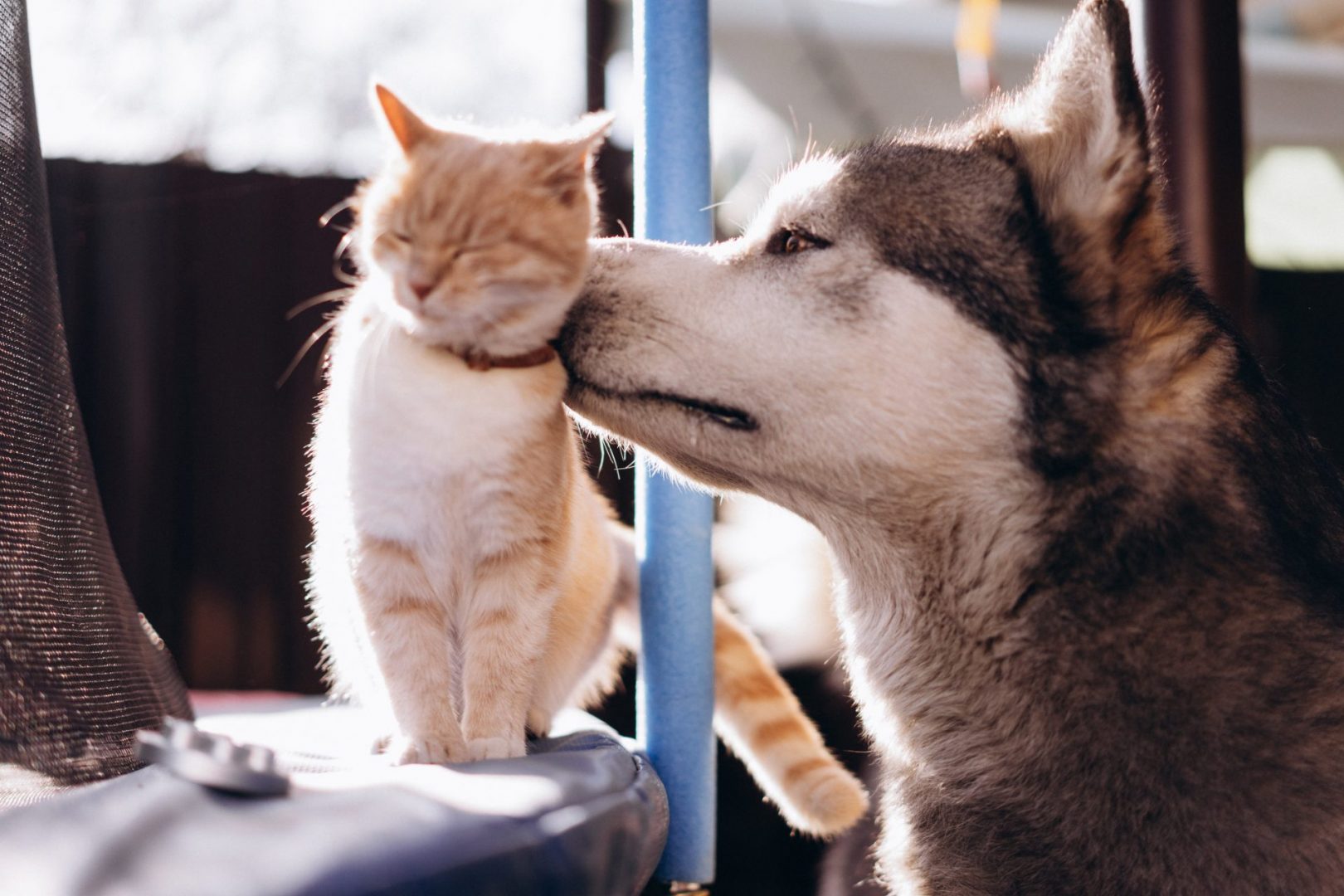You hit the jackpot. You found someone on the FetchaDate app who’s a fellow pet lover. You swiped right on their virtual pet, and you found yourself interested in the owner too. You’re a great match and enjoy many of the same activities.
It’s official. You’ve both decided to go on a date. Then you find out something you weren’t aware of. While you have a dog, your pet match has a cat. Uh oh. Houston, we have a problem. Is this going to play out like a Pepé Le Pew episode? Will the cat scratch and hiss at your pup? Will your dog eat the cat for lunch?

Don’t worry. You don’t have to give up on the relationship. Contrary to the stereotype, cats and dogs don’t all hate each other. And, if they’ve been socialized around cats and dogs early on, the new friend’s intro can be relatively smooth. The notion that cats and dogs are instinctively enemies is mostly because they haven’t been taught how to live together. Fortunately, if they were simply left to their own devices, they’d most likely just play a game of chase. At most, maybe a few tufts of hair may be involved or a scratch.

DOGS VERSUS CATS
If you’re both a “match” and have had a few (video) chats, then there will come a time when you meet in person. Those early chats are the best time to get to know the personality of any pet. Have their pets been around other cats and dogs? If so, how’d they handle it? If not well, do they believe it was the circumstances or the other person’s pet? You’ll want to talk about this before committing to the first in-person date.
It would be disheartening to explore a deeper relationship only to discover your pets can’t get along. If your dog can’t stand cats, it’s only fair to give a fair warning. Don’t let the other person believe your dog will react fine if you know (s)he won’t. But, if there’s a possibility things can turn around, then we have tips about how to introduce them.
HUMANS FIRST, THEN PET(S)
When dating, if only one person has the pet, it’s “game on” to include the pet—even on a first date if the location is appropriate. If you both have pets that are easygoing, then it’s all systems go as well. But, if you’re unsure and/or know that at least one pet is temperamental, then have the date without pets or only one at a time. Before you put your furry friends through the stress of meeting, see if the relationship lasts more than a couple of months. There’s no need to get your pet(s) all worked up around each other if you only go out a few times. Your pet’s already dealing with meeting your human friend first. Establish the relationship, then introduce pets who may have issues.
GET SMELLY
Before the pets meet, have them smell something of the other pet prior to their first get-together. This will help them at least become familiar with each other’s scents.

If you decide to give it a whirl and it’s time for your dog to meet that cat, make a date on neutral territory. Pets are protective of their home turf and their owners. Meet at a pet park, pet-friendly café, or other public location.
TAKE IT SLOW IN NEUTRAL TERRITORY
Once you’re all together, don’t let the two loose and unattended until you know how they react to each other. This is where pet dating for them needs to go really slowly. Start with the cat in a carrier and the dog on a leash when they first see each other. Let them sniff each other through the carrier. If all continues to go well, have them both meet while the dog is leashed. Watch for signs of aggression from either party. Have patience and take it slow. It may take more than one visit to establish rapport.

HOME VISIT
You’ve made it through the initial visit(s), now it’s time to introduce them to each other’s home turf, starting with the cat owner’s home. Be sure the cat has a safe place to go when the new friend comes to visit, in case they don’t want to be around each other.
Unless you’re both moving in with each other, this is a situation that can be avoided for quite awhile. Cats can be left alone overnight, but the dog will need to be let out multiple times daily.
Initiate them to the other’s home turf by bringing the cat by while your dog is with a dog groomer or doggie daycare. This lets the cat learn the smell of the dog and its surroundings. Once they do meet, the most important thing is to watch them. Don’t force them to engage, and be sure they aren’t hurting one another.
Reinforce their positive behavior with treats and affection. If the first visit doesn’t go well, don’t give up; try again later. You may think it’s not going to work. But given time and attention, your two buddies may soon become friends themselves. Or, you may be fortunate and neither may even care about the other’s presence. Most of all, have patience. If you’re both willing to put in some work, your dog and the cat may have a great relationship.

WHO’S IN CHARGE
Congrats, the pets get along! And, your relationship is working out as well. Now if you continue to date, there are plenty of other topics to discuss such as training, feeding, and sleeping arrangements. You have one idea, and your new partner may have another. Having opposite views can be a snag to address sooner rather than later. Have faith that there’s success in finding a middle ground. Be the head of the pack rather than the pets ruling the roost.
Just remember that having different animals as pets doesn’t have to mean you can’t date. It just means you’ll have to have patience, find commonalities, and train your pets to get along. Take it slow and easy with your furry friends, and you may soon have a blended life.








